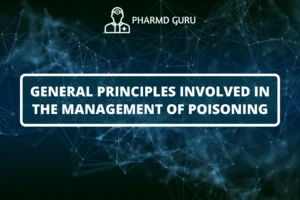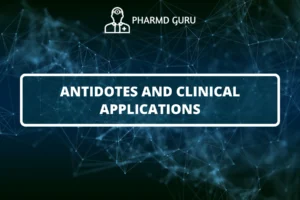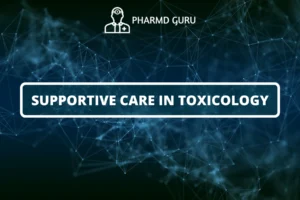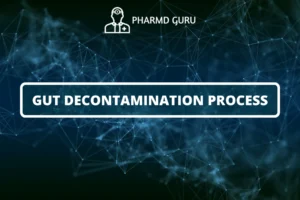Plants poisoning mainly Mushroom poisoning and mycotoxin poisoning pose serious risk to human health. Plants are a vital part of our environment, providing us with food, shelter, and aesthetic beauty. However, not all plants are safe for consumption or contact. Some plants, such as certain mushrooms and those contaminated with mycotoxins, can pose a significant risk to human health.
SCROLL DOWN TO THE BOTTOM OF THE PAGE FOR ACTUAL NOTES
TABLE OF CONTENTS:
- Introduction
- Mushroom Poisoning
- 2.1. Common Poisonous Mushrooms
- 2.2. Clinical Effects
- 2.3. Management
- Mycotoxin Poisoning
- 3.1. Common Mycotoxins and Their Sources
- 3.2. Clinical Effects
- 3.3. Management
- Prevention Tips
1. Introduction
Plants are a vital part of our environment, providing us with food, shelter, and aesthetic beauty. However, not all plants are safe for consumption or contact. Some plants, such as certain mushrooms and those contaminated with mycotoxins, can pose a significant risk to human health. In this article, we will explore the topic of plants poisoning, specifically focusing on mushrooms and mycotoxins. We will discuss common poisonous species, their clinical effects, management approaches, and prevention tips.
2. Mushroom Poisoning
Mushroom poisoning occurs when individuals consume toxic species of mushrooms, mistaking them for edible varieties. While mushrooms are known for their culinary value and health benefits, some species can be highly toxic and cause severe harm if ingested. Let’s delve into the details of mushroom poisoning.
2.1. Common Poisonous Mushrooms
There are various poisonous mushrooms found worldwide. Here are some commonly encountered toxic species:
- Amanita phalloides (Death Cap): This mushroom contains amatoxins, which can lead to liver and kidney damage and even be fatal if ingested.
- Amanita virosa (Destroying Angel): Similar to the Death Cap, this mushroom contains amatoxins and is highly toxic.
- Galerina marginata: Also known as the Deadly Galerina, it contains amatoxins and is often mistaken for edible mushrooms.
- Conocybe filaris: This species, commonly known as the Deadly Conecap, contains amatoxins and can cause severe illness.
- Gyromitra spp.: False Morels, such as Gyromitra esculenta, contain a toxin called gyromitrin, which can be harmful when ingested.
2.2. Clinical Effects
The clinical effects of mushroom poisoning can vary depending on the species ingested, the amount consumed, and the individual’s susceptibility. Here are some common symptoms associated with mushroom poisoning:
- Gastrointestinal Disturbances: Nausea, vomiting, abdominal pain, and diarrhea are typical gastrointestinal symptoms that may occur within hours of ingestion.
- Neurological Symptoms: Certain toxic mushrooms can affect the central nervous system, leading to symptoms such as dizziness, confusion, hallucinations, seizures, and even coma.
- Organ Failure: In severe cases, mushroom poisoning can result in liver and kidney damage, leading to organ failure and potentially life-threatening complications.
2.3. Management
Prompt and appropriate management is crucial in cases of mushroom poisoning. If someone ingests a toxic mushroom or exhibits symptoms of poisoning, the following steps should be taken:
- Immediate Medical Attention: Contact emergency medical services or the nearest poison control center for expert guidance.
- Identify the Mushroom: If possible, take a picture or retain a sample of the mushroom ingested to help healthcare professionals identify the species and provide appropriate treatment.
- Gastrointestinal Decontamination: In some cases, induced vomiting or gastric lavage may be performed to remove any remaining mushroom material from the stomach.
- Supportive Care: Treatment focuses on managing symptoms and providing supportive care, such as intravenous fluids, to maintain hydration and support organ function.
- Antidote Administration: In specific cases, antidotes like silibinin (derived from milk thistle) may be administered to counteract the effects of certain mushroom toxins.
3. Mycotoxin Poisoning
Apart from mushrooms, mycotoxins can also pose a significant risk to human health. Mycotoxins are toxic compounds produced by fungi that grow on various food items, particularly grains and nuts. Let’s explore mycotoxin poisoning in more detail.
3.1. Common Mycotoxins and Their Sources
Several mycotoxins are of concern due to their potential health hazards. Here are some common mycotoxins and their sources:
- Aflatoxins: Produced by Aspergillus fungi, aflatoxins commonly contaminate peanuts, corn, and other crops stored in warm and humid conditions.
- Ochratoxin: Ochratoxin A is produced by various Aspergillus and Penicillium fungi and can contaminate grains, coffee, and dried fruits.
- Deoxynivalenol (DON): Produced by Fusarium fungi, DON can be found in cereal grains such as wheat, barley, and corn.
- Zearalenone: Also produced by Fusarium fungi, zearalenone is mainly found in corn, wheat, and barley.
- Patulin: Patulin is produced by various Penicillium and Aspergillus fungi and can contaminate apple products, apple juice, and other fruits.
3.2. Clinical Effects
The clinical effects of mycotoxin poisoning depend on the specific mycotoxin, its concentration, and the duration and level of exposure. Common symptoms may include:
- Gastrointestinal Disturbances: Nausea, vomiting, abdominal pain, and diarrhea may occur after ingestion of mycotoxin-contaminated food.
- Allergic Reactions: Some individuals may experience allergic reactions, such as skin rashes, itching, or respiratory symptoms.
- Liver and Kidney Damage: Prolonged exposure to certain mycotoxins, such as aflatoxins, can lead to liver damage and an increased risk of liver cancer.
- Immunosuppression: Some mycotoxins can weaken the immune system, making individuals more susceptible to infections and other health issues.
3.3. Management
If mycotoxin poisoning is suspected, it is important to seek medical attention promptly. The management of mycotoxin poisoning generally involves the following steps:
- Discontinue Exposure: Identify and eliminate the source of mycotoxin contamination to prevent further exposure.
- Medical Evaluation: Healthcare professionals may conduct diagnostic tests and evaluate symptoms to assess the extent of poisoning and guide appropriate treatment.
- Supportive Care: Treatment focuses on managing symptoms, providing supportive care, and addressing specific complications that may arise.
- Preventive Measures: Education regarding proper food storage, handling, and the importance of maintaining appropriate conditions for storage can help prevent mycotoxin contamination.
4. Prevention Tips
Prevention plays a crucial role in avoiding plant poisoning incidents. Here are some preventive measures to consider:
- Education and Awareness: Learn about the toxic plants, mushrooms, and mycotoxins prevalent in your region. Understand their characteristics, distinguishing features, and potential risks.
- Be Cautious: Only consume mushrooms or wild plants if you are certain of their safety. If in doubt, consult an expert or avoid consumption altogether.
- Proper Storage and Preparation: Store food items in appropriate conditions to prevent fungal growth and mycotoxin contamination. Ensure proper cooking techniques to eliminate or reduce mycotoxins in food.
- Label Reading: When purchasing food products, read labels carefully to ensure they meet quality and safety standards.
- Food Inspection: Regularly inspect food items for signs of spoilage, such as mold growth, and discard any items that appear contaminated.
- Keep Children and Pets Safe: Educate children and pets about the dangers of consuming unknown plants or mushrooms. Keep toxic plants out of their reach.
ACTUAL NOTES




